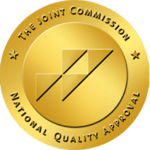Sober living houses are temporary residences where recovering substance abusers may choose to live once they have successfully completed their treatment and detox program. Based on the addiction and recommendation of physicians, the person in recovery may stay at a gender-specific home or an alternative option like a halfway house. This depends on the needs of the recovering addict.
A halfway house is typically stricter than a sober living facility, which is usually privately owned and operated. At a sober living home, residents are free to leave for approved outside activities like work or school. However, there are strict rules like visitor approval, house participation, curfews, and drug testing. At Westwind Recovery®, we help you learn more about the benefits of sober living houses.
Types of Sober Living Residences
Sober living residences may be suburban houses, condos, apartments, or even luxury compounds. Regardless, they are designed to provide a smooth transition process from inpatient treatment and detox programs back to independent life. Sober living homes provide a form of outpatient assistance through their residences.
The centers may have supplemental offerings like private gyms, classes, nutritional guidance, private kitchens, and cable and Internet service availability. All sober living facilities offer 24/7 support based on the size of the home and number of residents. Centers usually offer individual or group therapy, medication support, educational programs for recovery, and holistic activities like massages, yoga, meditation, and mindfulness training. However, all sober living centers conduct frequent drug testing and residents must maintain their sobriety for the length of their stay.
Gender-Specific Sober Living Homes
There are also gender-specific sober living residences. For male-only or female-only homes, sober living takes recovery to a new level. Making this consideration when choosing a facility might make recovery even smoother.
For house activities or group therapy sessions, gender-specific homes make it easier to develop friendships and share feelings freely, without hesitation or withholding. Numerous studies show that women are much more attuned with their feelings, while men hold feelings back.
Additionally, the National Institute on Drug Abuse, recommends that there be no romantic involvement with another person during early recovery. Healing from addiction requires willpower, focus, and a distraction-free environment. Gender-specific homes offer the opportunity to work on healing, while developing peer support, only. Romantic relationships can sometimes be codependent or unhealthy if conflicts arise. This may lead to addiction urges or other obstacles. Gender-specific substance abuse treatment programs eliminate one less potential problem on the pathway to recovery.
Reasons to Try Sober Living
Medical Support
Sober living homes offer the support of medical doctors, nurses, and addiction experts to help with drug testing and medication support (if needed). This ensures that recovering addicts are being monitored so they can achieve their health and sobriety goals, without pain.
Mental Health Support
Sober living homes have mental health professionals on staff with varying degrees of licensure. Therapists lead different meetings like 12-step programs (narcotics or alcoholics anonymous meetings), while also providing individual counseling regularly at a mental health treatment program. In sessions, therapists encourage residents to challenge core beliefs, irrational thoughts, and uncover harmful emotions that may push them to turn back to drugs or alcohol.
Accountability
Based on the sober living facility, there are sets of requirements for residents. The house rules serve as tools for relapse prevention and in reducing stress. They help keep the recovering party accountable. By meeting each rule (examples: household task participation, group activity requirements, or curfew), they show that they can handle responsibilities. While the rules are meant to prevent relapse, they also empower the individual by encouraging personal accountability.
Peer Support Through Communal Living
Residents in sober living facilities will be living with others at similar stages in recovery. They may or may not know the people they are living with. Most sober living houses allow residents to attend work or other outside activities, like 12-step meetings, for example. However, residents return to healthy, communal living in the evenings. Having roommates or housemates encourages peer-to-peer support and communication as residents learn to develop a substance-free life.
Trigger Free Environment
Sober living programs offer a controlled environment for those working on their recovery. Strict house rules like visitor restrictions, client approval, and a substance-free zone, for all people (including staff), provide a place free from stressors and potential triggers. They are removed from previous environments and people that may have had a harmful influence or supplied drugs or alcohol to them. Additionally, this new environment won’t trigger past memories (like when the individual may have been using). All memories and experiences in sober living aim to be positive and productive.
Healing Through Serenity
Typically, sober living homes are situated in calm neighborhoods, free from noise and loud distractions. This seclusion provides residents with consistent peace. Residents can stay focused while recovering from their addictions or from the smaller stressors of jobs, school, or outside meetings. By having a reliable, calm environment to return to, recovery becomes more attainable.
Healing Through Eco-Therapy
According to Emory University research, “eco-therapy is a treatment modality that includes the natural world in relationships of mutual healing and growth.” It provides individuals with balance and a return to center, which is a necessary foundation for addiction recovery. Eco-therapy reconnects the body with outside sources of healing.
Discovery of Alternative Holistic Forms of Healing Management
Holistic forms of healing like eco-therapy, group counseling, individual talk therapy, mindfulness training, and transcendental meditation may all be offered at sober living homes. These alternative methods of healing show residents how to manage their addiction cravings in a healthier way.
Living the Solution
Through transitional stages, our sober living staff helps residents work their way back to life in the outside world. Whether attending 12-step meetings or therapy, sober living residents are living the solution every day.
A New Way of Living
Sober living has high proven rates of recovery, especially in comparison to recovering substance abusers that live independently after treatment. The transitional environment helps residents develop good habits, daily routines, and understand alternative methods of stress management. The main goal of sober living is to ensure that residents do not relapse. Sober living provides a safe and nurturing environment where residents can transition from dependence to independence and start a new life. Contact Westwind Recovery® at 855.340.8832 today.

Dr. Deena is the Chief Clinical Officer of Westwind Recovery®, an award-winning outpatient treatment center in Los Angeles where she oversees the clinical and administrative program and treatment methods. Dr. Deena is a doctor of psychology and licensed clinical social worker since 1993. LCSW #20628. Originally from the East Coast, Dr. Deena has worked running treatment centers, worked as a therapist in psychiatric hospitals as well as school settings and currently has a thriving private practice in the LA area. Dr. Deena has appeared regularly on the Dr. Phil Show as an expert since 2003. She has also been featured on many other TV shows, podcasts and has contributed to written publications as well as podcasts.



